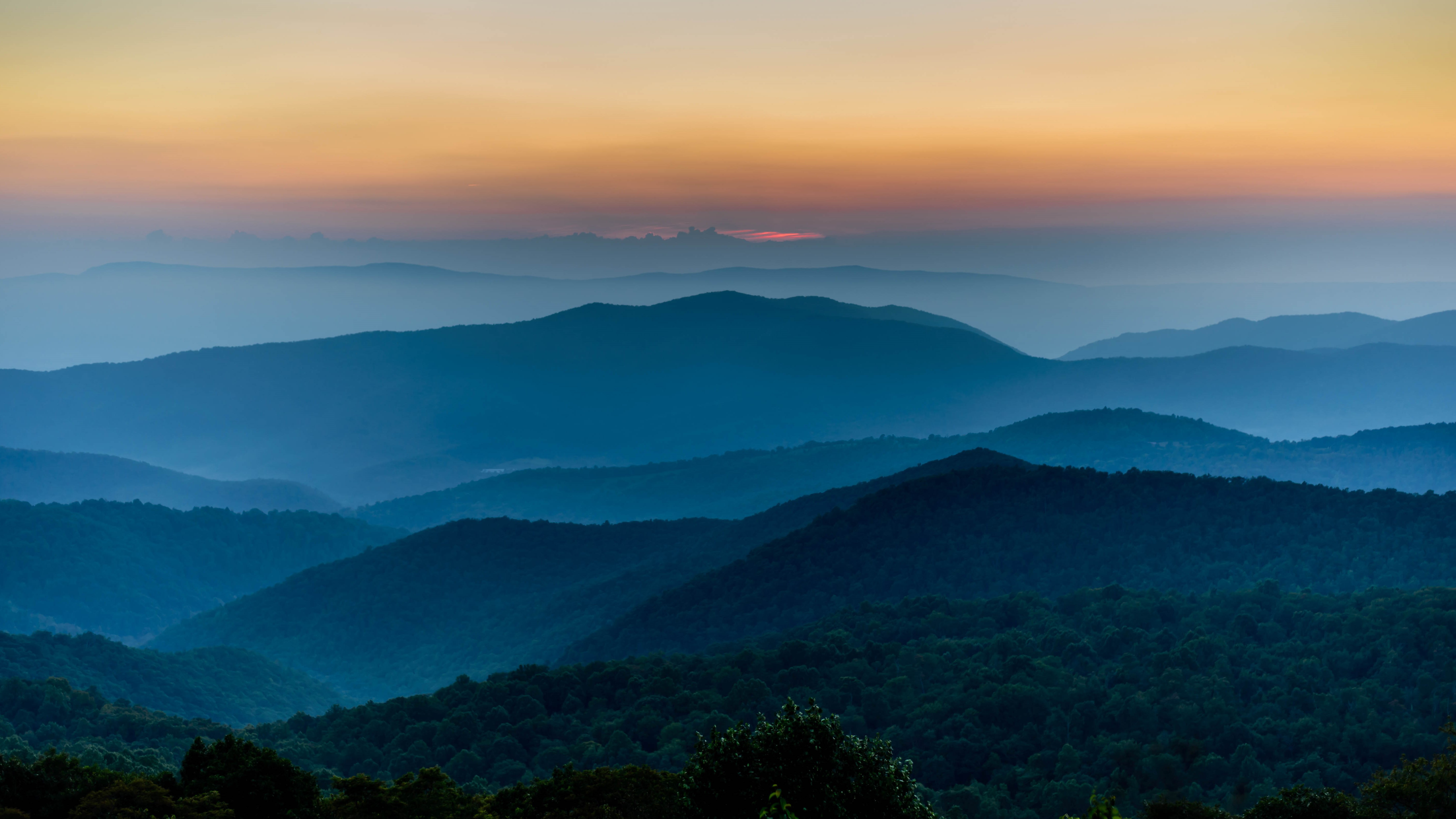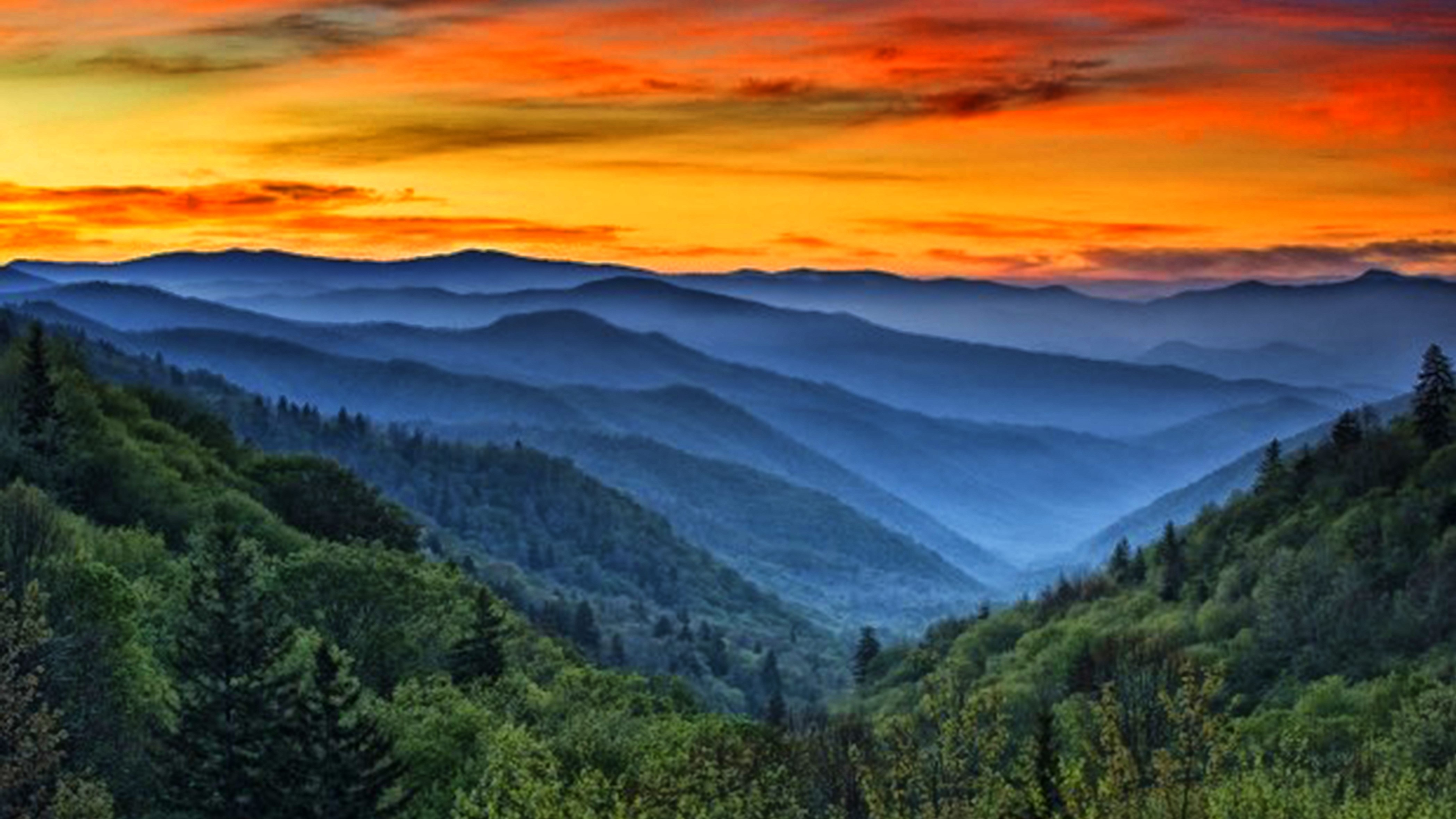
Why are the Blue Ridge Mountains blue? It’s a question I suppose I’ve vaguely wondered many times as I’m driving across North Carolina, but never thought to investigate until recently. I’m not sure why I’ve never thought to ask before. After all, their cerulean hues are startling as compared to any other mountain range, and the impression never gets old, no matter how many times I set eyes on it.
If you’ve ever been lucky enough to drive the Blue Ridge Parkway between Great Smoky Mountains and Shenandoah National Park, you’ll have been captivated by the layers of mountains that, depending on the season and the time of day, can appear as eggshell blue, turquoise or even dark indigo. The range of mountains, which extends some 550 miles from Pennsylvania to Georgia, is part of the greater Appalachian Mountains, one of the major mountain ranges in the US. As a whole, the Appalachians don’t appear blue, but the Blue Ridge Mountains, when seen from a distance, always do.
As it turns out, scientists (and probably a lot of hikers) have been trying to get to the bottom of this apparition for decades, at least according to a 1964 article I dug up in the New York Times describing decades of conjecture and scientific experimentation. After all, up close, the mountains are just rock – mostly plain old granite and limestone – covered in thick forest. The rocks are gray and the trees are green, so why then are the mountains blue?

Why are the Blue Ridge Mountains blue?
The answer to this mysterious question (which I had no idea I was asking) came to me recently from the good folks at the US National Weather Service. They posted on Facebook to explain that even though the trees on the mountains are indeed green, they’re also responsible for the azure shades that characterize the range, writing that the phenomenon “is due to the chemical released by the native trees that scatter blue light called isoprene. Trees emit isoprene as a way to protect themselves from excessive heat.”
Never one to take a social media post at face value, I dug a little deeper and found a 2008 article in the Annals of Botany which confirms that some, but not all, plants secrete isoprene, a common volatile organic compound, to help tolerate sunlight-induced heat. Isoprene is common to coniferous trees, such as the oak trees which dominate the landscape here. This process also helps these plants better tolerate ozone.
As you know if you’ve traveled this gorgeous corridor, it’s pretty hot down there for a lot of the year, especially the further south you go, so the blue tinge means the trees have some defense against the climate, and a warming planet. Their continued survival ensures that the Blue Ridge Mountains will remain a special sign for all arriving travelers and it's another great reason to take extra care of our planet.
Now that that’s cleared up, what are you waiting for? Grab your best hiking boots and go and explore what these splendid eastern mountains have to offer. The 100-mile stretch of the Appalachian Trail in North Carolina passes through the very heart of the Blue Ridge Mountains, while Great Smoky Mountains and Shenandoah National Parks boast hundreds of miles of trails and the hiking around Asheville, NC is guaranteed to delight.







